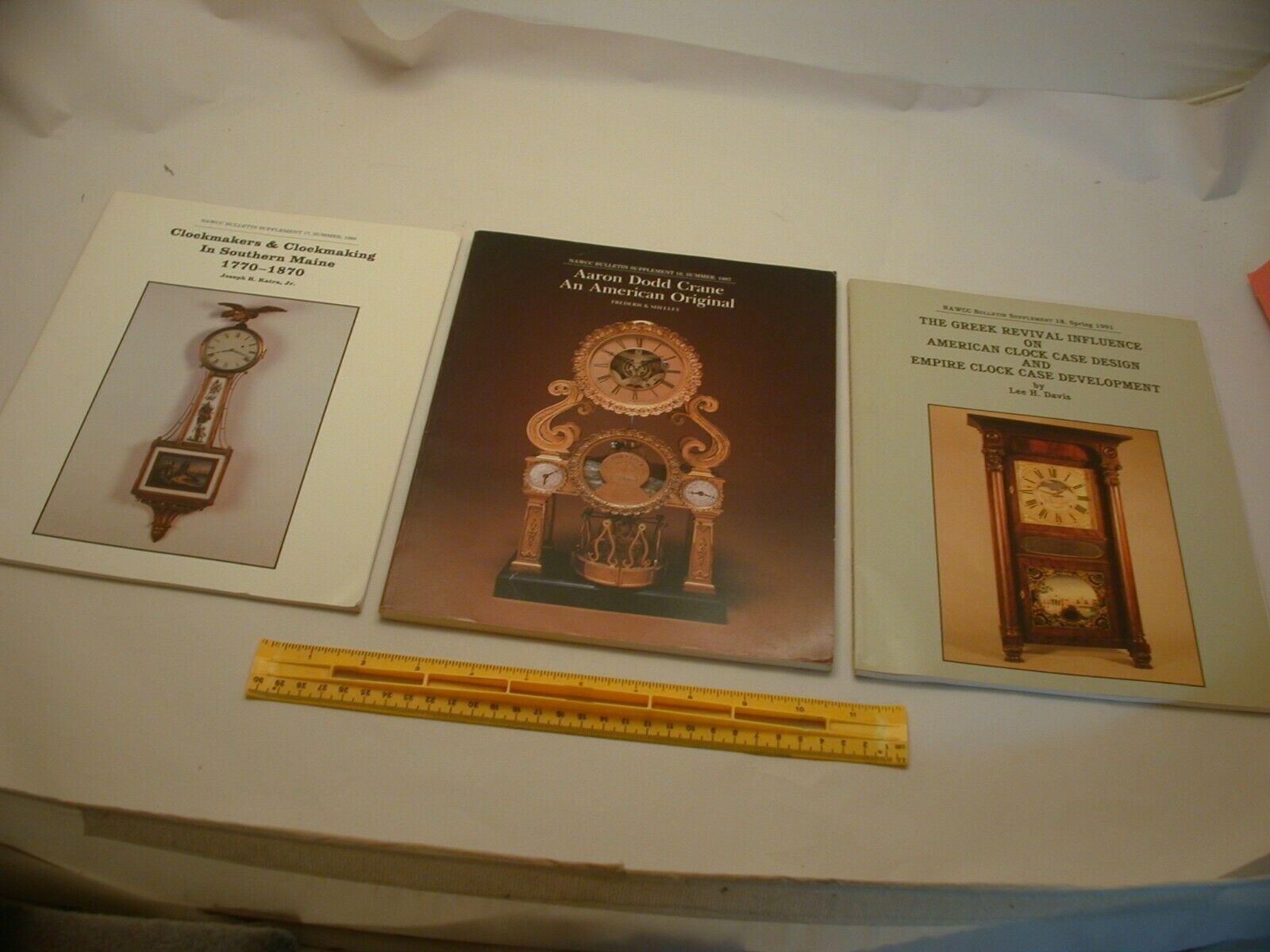-40%
Book 1,581 – Lot of 3 NAWCC Bulletin Supplements
$ 5.27
- Description
- Size Guide
Description
Up for sale are 3 NAWCC Bulletin Supplements:Aaron Dodd Crane: An American Original
,
Clockmakers & Clockmaking in Southern Maine 1770-1870
, and
The Greek Revival Influence on American Clock Case Design and Empire Clock Case Development
.
This lot includes:
·
Aaron Dodd Crane: An American Original
by Frederick Shelley. Written as an NAWCC bulletin supplement No. 16.
Aaron Dodd Crane, definitely an American original produced some of the most collectable and desirable clocks during the mid-1800’s. He produced a 30-day weight driven shelf clock and an anniversary clock that was to be wound once a year. He also made an astronomical timepiece and tower clocks and escapements for fire alarms. Crane was a very versatile maker with a keen mind. Interesting reading. 120 pages. Soft cover. Copyright 1987. Excellent condition.
·
Clockmakers & Clockmaking in Southern Maine 1770-1870
by Joseph R. Katra, Jr. Written as an NAWCC bulletin supplement No. 17. It is a fairly well established fact that clockmaking in Maine during the 18
th
and 19
th
centuries never reached the levels nor achieved the renown of the industry that came about in Massachusetts and Connecticut. For purposes of this study, the author has confined his survey of Maine clockmakers and clockmaking the southern part of the state in the period from 1770 to 1870. The account is in two parts. The first part focuses on the clock and watchmakers in the Portland, Maine area, reaching north to the locality of Brunswick and south along the coast from Saco to Kittery. The second part goes further south and west to the New Hampshire border, with emphasis on the unique Main Quaker “iron-plate” clockmakers in the Alfred-Berwick Region. 80 pages. Soft cover. Copyright 1989. Excellent condition.
· The Greek Revival Influence on American Clock Case Design and Empire Clock Case Development by Lee H. Davis. Written as an NAWCC bulletin supplement No. 18. The decision to study the use of the cyma recta cornice found on many American clock cases from about 1830 or 1835 to as late as 1915 was based mainly on an initial admiration for Late Empire period clock cases – Specifically the “standard” eight-day weight driven column and cornice clocks. A case will be strongly pleaded for the adoption of the term “standard” column and cornice clocks as opposed to “variation” column and cornice clocks to increase the accuracy of our modern horological language. “Standard” and “variation” column and cornice clocks will be defined, illustrated, and discussed, so the reader my thoroughly understand the differences. 112 pages. Soft cover. Copyright 1991. Excellent condition. – Book 1,581

















